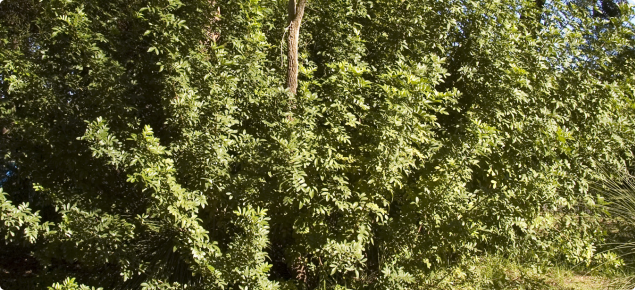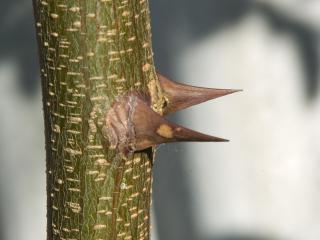Disputes, occasionally leading to civil court actions, have been known to arise in these situations, so it is wise to consider the implications before planting that suckering tree. In fact, when purchasing any tree it is best to go to a reputable nursery or garden centre whose staff will be able to answer a range of important questions, including whether or not the tree is likely to sucker or produce invasive roots.
Land holders who already own a suckering tree should not simply cut it down, because the roots, reacting defensively, will usually send up many more suckers.
Poisoning the tree first is essential. It is advisable to seek the services of a professional tree carer/surgeon/lopper to remove the problem tree. People tend to think this is expensive, but having the job done properly may save money in the long run.
Common suckering trees
Broad-leaf pepper
Schinus terebinthifolius comes from tropical South America, which explains one alternative common name, Brazilian pepper, but not the other, Japanese pepper, which it is often called in Western Australia.
Only female trees produce berries but both female and male trees sucker prolifically, causing problems for the people who own them and for neighbours. When pulled up, a seedling can be recognised by its long tap root, whereas a sucker snaps off carrying an end shaped like a hockey stick.
When broad-leaf pepper grows too big, the owners usually lop it back, but the resultant shock promotes suckering. Any soil disturbance that damages the roots also triggers suckering. However, in broad-leaf pepper, suckering occurs even when there is no obvious damage to the parent.
Aside from the suckers, broad-leaf pepper has other undesirable qualities as a garden tree. The crushed ripe berries are known to cause respiratory difficulties for some people, and contact with sap and resin can cause skin irritation.
Robinia or black locust
Robinia, Robinia pseudoacacia, does not produce suckers in all circumstances and some big, old specimens have never caused problems. However, if the roots are disturbed or damaged, vigorous suckering starts.
The smaller ornamental varieties also produce suckers since they are grafted onto R. pseudoacacia rootstock.
Disturbing the soil around a robinia can cut the roots and stimulate suckers.
Occasionally the results are extreme. For example, if an old house is demolished and the garden containing a robinia is bulldozed, root fragments left in the ground will send up suckers long after the block has been redeveloped. Pulling them up is not easy because the suckers have sharp, sturdy thorns — and, in any case, it is futile since more suckers will emerge in their place.



